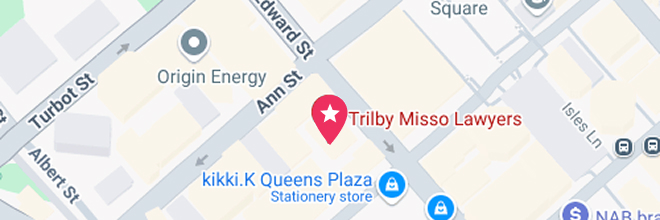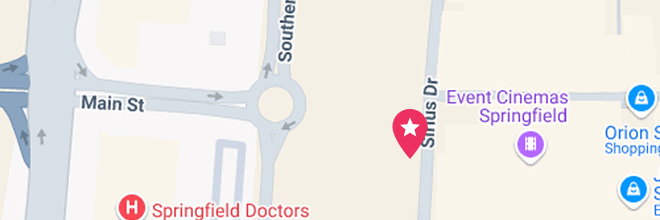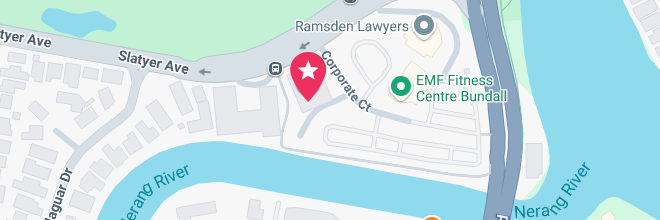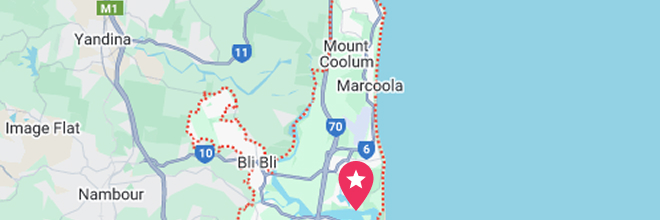Table of Contents
- Trilby Misso: A capable personal injury lawyer in Bundaberg
- Why choose Trilby Misso as your personal injury lawyer in Bundaberg?
- Bundaberg’s key features
- Bundaberg’s demographics
- Bundaberg’s historical background
- Bundaberg’s key attractions
- Bundaberg’s micro-economy
- Education and healthcare in Bundaberg
- Links for further reading
Visit Our Bundaberg Office
- 20B Quay Street, Bundaberg QLD 4670
- Monday-Friday 8:30am to 5pm
- (07) 4139 0100
 Bundaberg’s key features
Bundaberg’s key features
Bundaberg is situated along the Burnett River, about 385 kilometres north of Brisbane. It serves as a gateway to the Southern Great Barrier Reef, making it a significant location for both coastal and inland features. The town is surrounded by fertile agricultural lands, particularly known for producing sugar cane, a key contributor to the local economy.
One of Bundaberg’s most prominent geographical features is the Burnett River, which flows through the region and out into the Coral Sea. The river provides a natural waterway, supporting both agriculture and tourism. Nearby, Mon Repos Conservation Park is another vital landmark, famous for its sea turtle rookery. Visitors from all over come to witness the nesting and hatching seasons of loggerhead turtles, making it an ecologically important area.
The Bundaberg Botanic Gardens, located just outside the city centre, offer a lush landscape that showcases the region’s diverse plant species. These gardens highlight the subtropical climate that defines Bundaberg. The climate is generally warm and humid, with hot summers and mild winters. Average summer temperatures range from 20°C to 30°C, and winters usually stay between 10°C to 23°C, which makes the area suitable for year-round outdoor activities.
Bundaberg’s environment is characterised by a mix of coastal, riverine, and rural landscapes, providing both natural beauty and agricultural productivity. The region faces some environmental challenges, such as managing water resources and balancing development with conservation, particularly in areas close to the Great Barrier Reef. Overall, Bundaberg’s geographical features and climate shape its identity as a vital agricultural hub and tourist destination.
 Bundaberg’s demographics
Bundaberg’s demographics
Bundaberg is home to a population of around 50,000 people, according to the latest census data. It serves as a regional centre for the broader Bundaberg Region, which has a total population exceeding 96,000. The city’s demographics reflect a growing and evolving community, with a slightly older median age compared to the national average—around 46 years, highlighting a mix of retirees and working-age residents.
Cultural diversity in Bundaberg is present but less pronounced compared to major Australian cities. The majority of the population identifies as being of Australian or British descent, with smaller percentages of residents having German, Scottish, and Irish heritage. Aboriginal and Torres Strait Islander people make up approximately 4.5% of the population, contributing to the rich Indigenous history of the area. In recent years, the city has seen an increase in multiculturalism, with small but growing communities of people from South-East Asia, the Pacific Islands, and other parts of the world moving to Bundaberg.
The community in Bundaberg is known for its friendly, laid-back lifestyle, reflecting the agricultural roots and coastal environment of the region. The area is popular among families and retirees, with affordable housing, access to essential services, and a strong sense of community. Agriculture plays a major role in everyday life, with sugar cane farming, fruit and vegetable production, and fishing industries being prominent.
 Bundaberg’s historical background
Bundaberg’s historical background
Bundaberg’s history is deeply rooted in both its Indigenous heritage and its development as a regional hub in Queensland. Before European settlement, the area was home to the Taribelang Bunda people, who lived along the Burnett River for thousands of years. They had a rich connection to the land, relying on fishing, hunting, and gathering for sustenance. The Burnett River, which remains central to Bundaberg today, was a key resource for the local Indigenous community.
European settlement in Bundaberg began in the 1840s, initially as part of the wider expansion of Queensland’s agricultural frontier. Early settlers were drawn to the area by its fertile soil and its potential for sugar cane farming, which would become the backbone of the local economy. The town was officially surveyed and gazetted in 1867, taking its name from the local Bunda people combined with the German word “berg,” meaning hill.
Bundaberg quickly grew as sugar production expanded. By the late 19th century, the establishment of sugar mills and distilleries brought prosperity to the town. The Bundaberg Rum Distillery, founded in 1888, remains one of the city’s most recognisable symbols of its industrial heritage. The sugar industry attracted workers from around the world, including South Sea Islanders, who were brought to work on the plantations under difficult conditions. Their contributions, although under controversial circumstances, played a significant role in the town’s development.
Throughout the 20th century, Bundaberg continued to grow as an agricultural and industrial centre. Its port facilitated trade, and the expansion of infrastructure supported the city’s modernisation. Today, Bundaberg balances its historical identity with its role as a tourist destination, agricultural hub, and gateway to the Southern Great Barrier Reef, maintaining its unique connection to both land and sea.
 Bundaberg’s key attractions
Bundaberg’s key attractions
Bundaberg is rich in attractions and activities that cater to a variety of interests, making it an ideal destination for tourists and families alike. One of the most iconic spots is the Bundaberg Rum Distillery, where visitors can learn about the distilling process and the history of one of Australia’s most famous rum brands. The distillery offers guided tours, tastings, and an interactive museum, making it a must-visit for both history buffs and rum enthusiasts.
Another key attraction is the Bundaberg Botanic Gardens, a lush, tranquil setting where visitors can explore over 27 hectares of well-maintained gardens, including Japanese, Chinese, and indigenous flora. The gardens also house the Hinkler Hall of Aviation, a museum dedicated to the life and achievements of aviator Bert Hinkler, who was born in Bundaberg. Families can enjoy walking trails, picnic areas, and the nearby Kolkis Cafe, which overlooks a serene lagoon.
For those interested in marine life, Mon Repos Conservation Park offers an unforgettable experience. Mon Repos is home to the largest loggerhead turtle rookery in the South Pacific, and during the turtle season (November to March), visitors can witness nesting and hatching turtles—a magical event for both children and adults.
Bundaberg’s Alexandra Park Zoo is another family-friendly spot, offering a small but well-curated collection of native animals such as kangaroos, emus, and reptiles. It’s a free attraction, making it ideal for families looking for an affordable day out.
Outdoor enthusiasts will enjoy activities such as hiking in the Cania Gorge National Park or snorkelling along the Southern Great Barrier Reef. Bundaberg also hosts several festivals throughout the year, including the Bundy Flavours Festival, which celebrates local food and beverages, and the Bundaberg Show, a traditional agricultural event. These activities contribute to the vibrant cultural fabric of the city.
 Bundaberg’s micro-economy
Bundaberg’s micro-economy
Bundaberg’s economy is primarily driven by agriculture, manufacturing, and tourism, with a strong emphasis on local industries that take advantage of the region’s natural resources. The sugar cane industry is the backbone of Bundaberg’s economy, with vast plantations surrounding the town. Sugar milling and refining are significant contributors to employment and economic output. Bundaberg Rum, produced from molasses, remains a globally recognised brand, highlighting the symbiotic relationship between agriculture and manufacturing in the region.
In addition to sugar, the region produces a diverse range of crops, including macadamia nuts, tomatoes, avocados, and sweet potatoes. This agricultural diversity has enabled Bundaberg to become one of Queensland’s most productive food-growing areas. The Bundaberg Fruit and Vegetable Growers Cooperative supports local producers and helps promote the region’s produce domestically and internationally.
Tourism is another key sector for Bundaberg, particularly with its proximity to the Southern Great Barrier Reef. Attractions such as the Bundaberg Rum Distillery, Mon Repos Turtle Centre, and coastal areas bring in visitors year-round, supporting local hospitality and retail businesses. Eco-tourism, focusing on natural landmarks like Mon Repos Conservation Park, plays a growing role in attracting environmentally conscious tourists.
Manufacturing in Bundaberg goes beyond food and beverage production, with engineering and machinery industries also contributing to the local economy. These sectors support the agricultural base by providing essential equipment and technology.
 Education and healthcare in Bundaberg
Education and healthcare in Bundaberg
Bundaberg offers a wide range of educational and healthcare facilities, making it a well-equipped regional hub for families, students, and professionals. In terms of education, Bundaberg has a variety of options catering to different learning needs, from early childhood through to higher education. The region is home to several primary and secondary schools, both public and private. Notable institutions include Bundaberg State High School, St Luke’s Anglican School, and Shalom College, which provide quality education and diverse extracurricular programs.
For higher education, Central Queensland University (CQU) Bundaberg Campus is the primary provider. It offers undergraduate and postgraduate courses in fields such as business, education, health, and engineering. The campus supports local students who prefer to study close to home while also attracting those from surrounding areas. Vocational education is available through TAFE Queensland, which provides training in trade skills, hospitality, health services, and other industry-relevant courses, helping to develop the region’s workforce.
Healthcare in Bundaberg is well-established, with both public and private hospitals serving the local population. Bundaberg Base Hospital, the largest public hospital in the region, offers a wide range of services including emergency care, surgery, and maternity. It plays a key role in meeting the healthcare needs of Bundaberg’s residents. In addition, Friendly Society Private Hospital provides further options for private healthcare, specialising in surgeries, rehabilitation, and specialist consultations.
Here’s how our ‘no win no fee’ process works:
-
We chat
 It’s a free consultation.
It’s a free consultation. -
We meet
 A free detailed discussion.
A free detailed discussion. -
We plan
 You say ‘go’ – we build your case.
You say ‘go’ – we build your case. -
We lodge
 We present
We present
your case. -
We conclude
 We reach a settlement.
We reach a settlement.
You pay nothing until you win
We’ll also provide certainty and clarity, with a fair structure that has no ‘uplift’ fee, ever. You’ll pay nothing ‘til your claim is won.
Don’t delay. Speak with Trilby Misso today.
Your next step is a small one. All you need to do is give us a call on 1300 731 671 or complete this form here to arrange a quick chat.
During this initial conversation, we will:
- Have a chat about the circumstances and nature of your injury.
- Give you an indication of your eligibility to make a claim for compensation.
- Explain, in simple terms, how our process works. We will answer
any questions you have about fees, the legal process, and anything else you’re unsure about relating to your injury.
We understand that taking legal action can be stressful, and we’ll do all we can to ease your concerns.
The chat can take place at our place, your place, or by phone. There is no cost, no pressure, and no obligation.

Call 1300 731 671 or fill out this form, and we’ll get back to you within 2 hours (during business hours). We look forward to meeting you.






